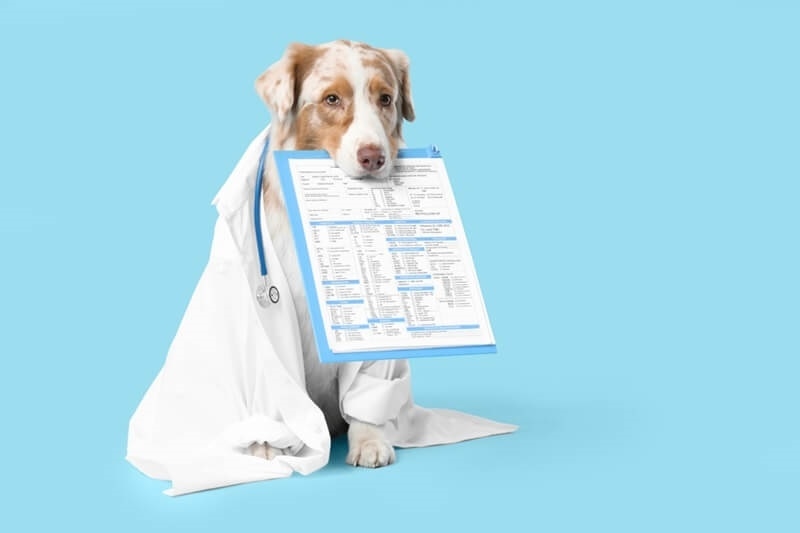
Our pets are more than just animals; they’re family. Whether it’s your dog wagging his tail after a long day or your cat curling up on your lap, these companions bring love, joy, and comfort to our lives. But what happens when your furry friend faces an unexpected illness or injury? US veterinary bills have a tendency to accumulate quickly—literally thousands of dollars for surgeries, medication, and ongoing treatment. That's where pet insurance comes into play.
This pet insurance guide will help you understand how to protect your pet without breaking the bank. From learning what policies include to finding affordable pet insurance, this comprehensive guide will give you all the facts you need to make an informed choice for your pet. Let’s know about the best pet insurance for dogs as well as what does pet insurance cover.
According to the American Pet Products Association (APPA), Americans have spent over $35 billion on pet veterinary care and supplies in 2023. Because costs are going up, one crisis, like a ruptured ligament surgery for a dog or kidney treatment for a cat, can run from $2,000 to $10,000.
Without insurance, most pet owners find themselves resorting to dipping into savings or, worse, choosing between treatment and poverty. With pet insurance, the worry is alleviated as some of the expenses are paid. This pet insurance guide exists to help you set the balance between cover and cost.

Perhaps the most common query posed by pet owners is: "What does pet insurance cover?"
Cost differs by provider and plan, but typically, most pet insurance policies cover the following:
Accidents and Injuries – Broken bones, swallowed objects, or urgent procedures.
Illnesses – Cancer, diabetes, infections, and inherited illnesses.
Diagnostics – X-rays, ultrasounds, and lab tests.
Medications – Prescription medication for eligible conditions.
Hospitalization – Overnight stays in the hospital and attendant care.
Optional add-ons are included on some plans to cover:
Routine Care – Vaccinations, check-ups, and flea and tick prevention.
Dental Care – Cleanings and extractions.
Alternative Therapies – Acupuncture, hydrotherapy, or rehabilitation.
Not all policies are equal, so reading the fine print is a necessity. This pet insurance guide highlights the importance of comparing what each policy does and doesn't include before enrolling.
Now comes the million-dollar question: Is pet insurance worthwhile?
Short answer: for most pet owners, yes.
Here's why:
Peace of Mind – You won't have to make horrific choices in moments of need.
Financial Protection – Even if you never require it, one single accident could make the plan well worth it.
Improved Care for Your Pet – Insurance gives the confidence to pursue necessary treatments without only looking at cost.
For example, if your dog needs surgery costing $5,000, and your plan covers 80%, you’ll only be responsible for $1,000. Without insurance, you’d pay the full amount out of pocket.
Of course, whether or not it’s “worth it” depends on your budget, your pet’s age, and health risks. But as this pet insurance guide shows, most US pet owners find coverage to be a financial lifesaver.
If you have a dog parent, you know dogs are playful, adventurous, and occasionally accident-prone. From chewing on dangerous objects to running at full speed into injuries, dogs have higher medical expenses.
That is why learning about the best pet insurance for dogs is important. Below are some companies generally at the pinnacle of the US rankings:
Healthy Paws – Renowned for comprehensive accident and illness coverage with unlimited annual payments.
Trupanion – Covers 90% of qualified expenses and pays vets directly.
Spot Pet Insurance – Tiered plans, wellness add-ons, and flexible deductibles.
Figo – Cloud-based claims processing and elite accident/illness coverage.
Nationwide – Comprehensive coverage, including exotic pets and wellness care.
When comparing the top pet insurance for dogs, consider breed-related conditions coverage, annual maximums, and percentage reimbursed. In this pet insurance guide, we encourage you to match the plan with your dog's lifestyle, age, and health needs.
One of the most sought-after issues among US pet parents is cheap pet insurance. Nobody likes paying more than essential premiums, of course. Luckily, there are a number of ways to reduce the expenses without sacrificing good coverage.
Tips to find cheap pet insurance are:
Start Early – The sooner your pet is insured, the lower the premium.
Compare Plans – Make use of comparison websites to compare different providers.
Adjust Deductibles – The higher the deductibles, the lower the monthly costs.
Look for Discounts – A majority of providers offer multi-pet or employer discounts.
Choose Mandatory Coverage – Exclude add-ons you don't need, like alternative treatments, if you want to save.
As the above pet insurance review shows, the key to making it pay is finding a balance between cost and adequate coverage for emergency situations. For most families, the $20–$60 monthly investment can pay big dividends in the bill payoffs from their vet.
Prior to purchasing a plan, be sure to include the following:
Age and Breed – Some breeds have issues with conditions like hip dysplasia or heart disease.
Pre-Existing Conditions – Most policies exclude diseases that your pet already has.
Annual Limits – Insurers cap payments at $10,000 for some and offer unlimited coverage for others.
Reimbursement Rates – 70%, 80%, or 90% are standard.
Waiting Periods – Usually 2–14 days for accidents and 30 days for illness.
This pet insurance primer encourages pet owners to read the fine print and ask providers about exclusions, surprise fees, and policy limits.
If you're ready to insure your pet, here's a simple step-by-step process:
Research Providers – Utilize this guide to discover the best pet insurance for dogs or cats.
Request Quotes – Most providers will enable you to obtain an estimate online within minutes.
Compare Coverage – Don't just think about the monthly premium—check deductibles, reimbursement rates, and exclusions.
Read Reviews – See what other US pet owners say about claims processing and customer service.
Enroll Early – The sooner you get covered, the better the rates.
This pet insurance guide recommends starting early when your pet is young and healthy to enjoy lower rates.
Our pets love us without conditions, and it's our job to safeguard them. US veterinary care can be expensive, but with a good plan, you don't have to trade financial security for your pet's care. What does pet insurance cover? Most importantly, accidents, illness, medicine, and sometimes preventive care. Is pet insurance worth it? For most households, yes—especially in case of high emergency fees. Look for providers with great accident/illness coverage, flexibility, and breed protection. Shop around, start early, and tailor cover according to your budget. This pet insurance guide shows that with the proper policy, you can protect your pet without breaking the bank.
This content was created by AI